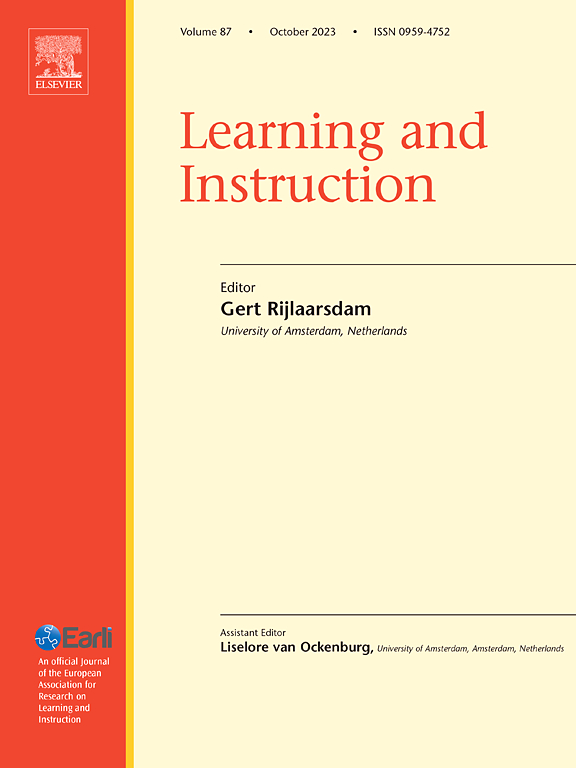Examining myside bias on a controversial historical event after engagement in dialogic argumentation: Insights from a think aloud study
IF 4.9
1区 教育学
Q1 EDUCATION & EDUCATIONAL RESEARCH
引用次数: 0
Abstract
The main objective of this exploratory study was to examine students' reasoning – particularly myside bias – on a controversial historical event using rich think aloud data, before and after being engaged in extensive dialogic argumentation on a non-historical topic. Elementary school students engaged in a nine-session argument-based intervention. For 30 students — a subset of the 116 participants who engaged in the intervention and who constitute the focus of this study — myside bias was assessed before and after their engagement in the intervention, using the think-aloud methodology. Students were asked to read two accounts about a recent war in their country—an own-side account from a historian of their ethnic group and an other-side account from a historian of the adversary ethnic group—and to think aloud. The analysis of the think-aloud protocols shows that participants responded differently when reading the own-side account vs. the other-side one. In particular, participants expressed significantly more statements that supported the other-side when reading the other-side's account than when reading their own-side's account. This shows that engaging with the other-side account, as revealed by the think-aloud process, can promote a deeper understanding of the other side. Moreover, they made more evaluative comments post-assessment than pre-assessment. However, their evaluative comments were still in favor of their own position, which shows how resilient myside bias is to change. Overall, our findings suggest that the think-aloud methodology is a valuable tool for identifying (changes in) myside bias and the conditions that facilitate it.
在参与对话性论证后,检查我对有争议的历史事件的偏见:来自有声思考研究的见解
这项探索性研究的主要目的是在对一个非历史话题进行广泛的对话论证之前和之后,利用丰富的“大声思考”数据,检查学生对一个有争议的历史事件的推理——尤其是我的偏见。小学生参与了一项九节课的以论证为基础的干预。对于30名学生——参与干预的116名参与者中的一个子集,他们构成了本研究的重点——我的偏见在他们参与干预之前和之后进行了评估,使用了有声思考方法。学生们被要求阅读两篇关于他们国家最近一场战争的报道——一篇来自自己民族的历史学家的报道,另一篇来自对手民族的历史学家的报道——并大声思考。对大声思考协议的分析表明,参与者在阅读自己的叙述和对方的叙述时的反应不同。特别是,参与者在阅读对方的陈述时,比阅读自己的陈述时,表达了更多支持对方的陈述。这表明,正如有声思考过程所揭示的那样,参与对方的账户可以促进对对方的更深入理解。评价后的评价意见多于评价前的评价意见。然而,他们的评价性评论仍然支持自己的立场,这表明我的偏见是多么有弹性的改变。总的来说,我们的研究结果表明,出声思考方法是识别(改变)我的偏见和促进它的条件的一个有价值的工具。
本文章由计算机程序翻译,如有差异,请以英文原文为准。
求助全文
约1分钟内获得全文
求助全文
来源期刊

Learning and Instruction
Multiple-
CiteScore
11.30
自引率
4.80%
发文量
109
期刊介绍:
As an international, multi-disciplinary, peer-refereed journal, Learning and Instruction provides a platform for the publication of the most advanced scientific research in the areas of learning, development, instruction and teaching. The journal welcomes original empirical investigations. The papers may represent a variety of theoretical perspectives and different methodological approaches. They may refer to any age level, from infants to adults and to a diversity of learning and instructional settings, from laboratory experiments to field studies. The major criteria in the review and the selection process concern the significance of the contribution to the area of learning and instruction, and the rigor of the study.
 求助内容:
求助内容: 应助结果提醒方式:
应助结果提醒方式:


